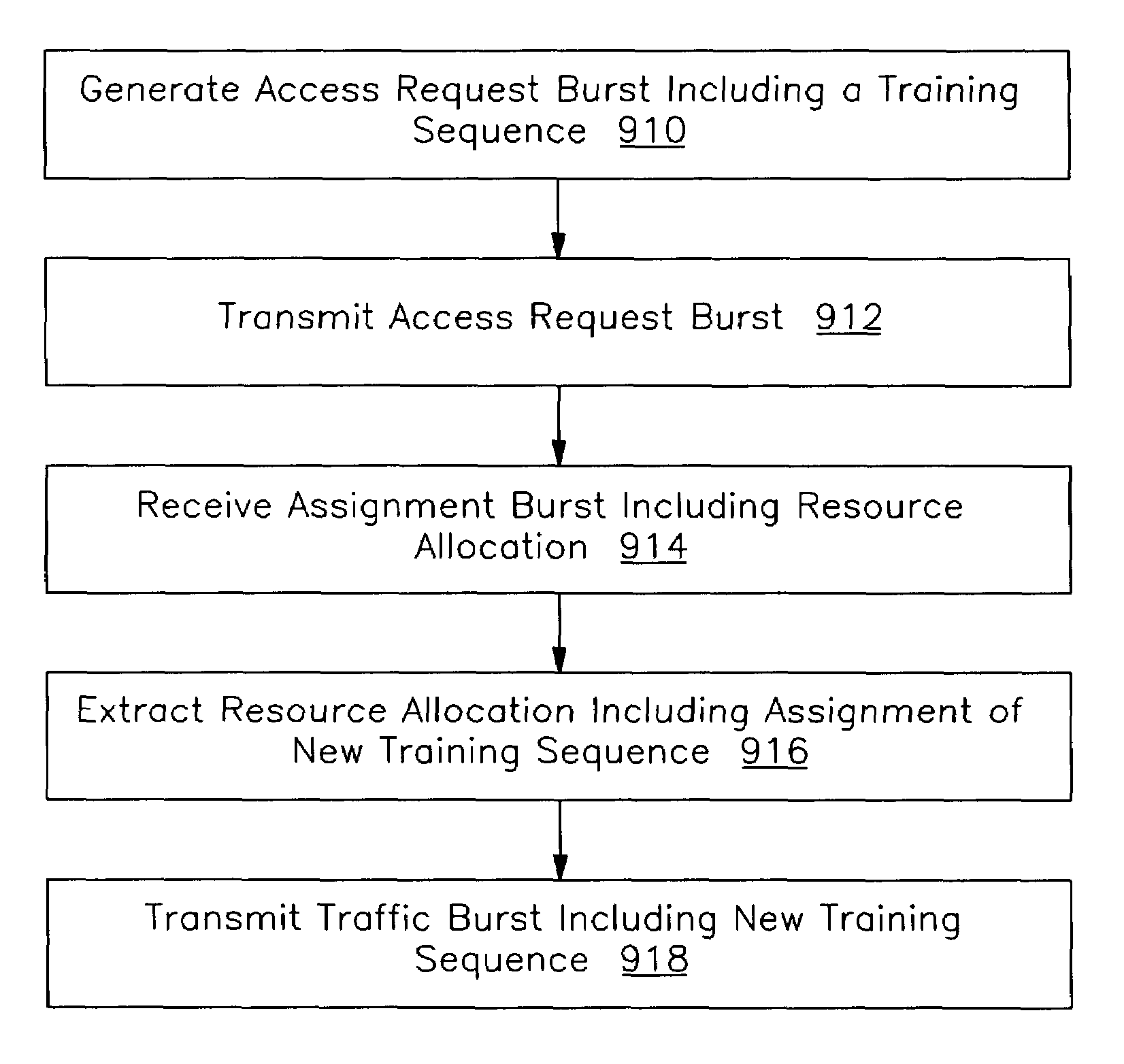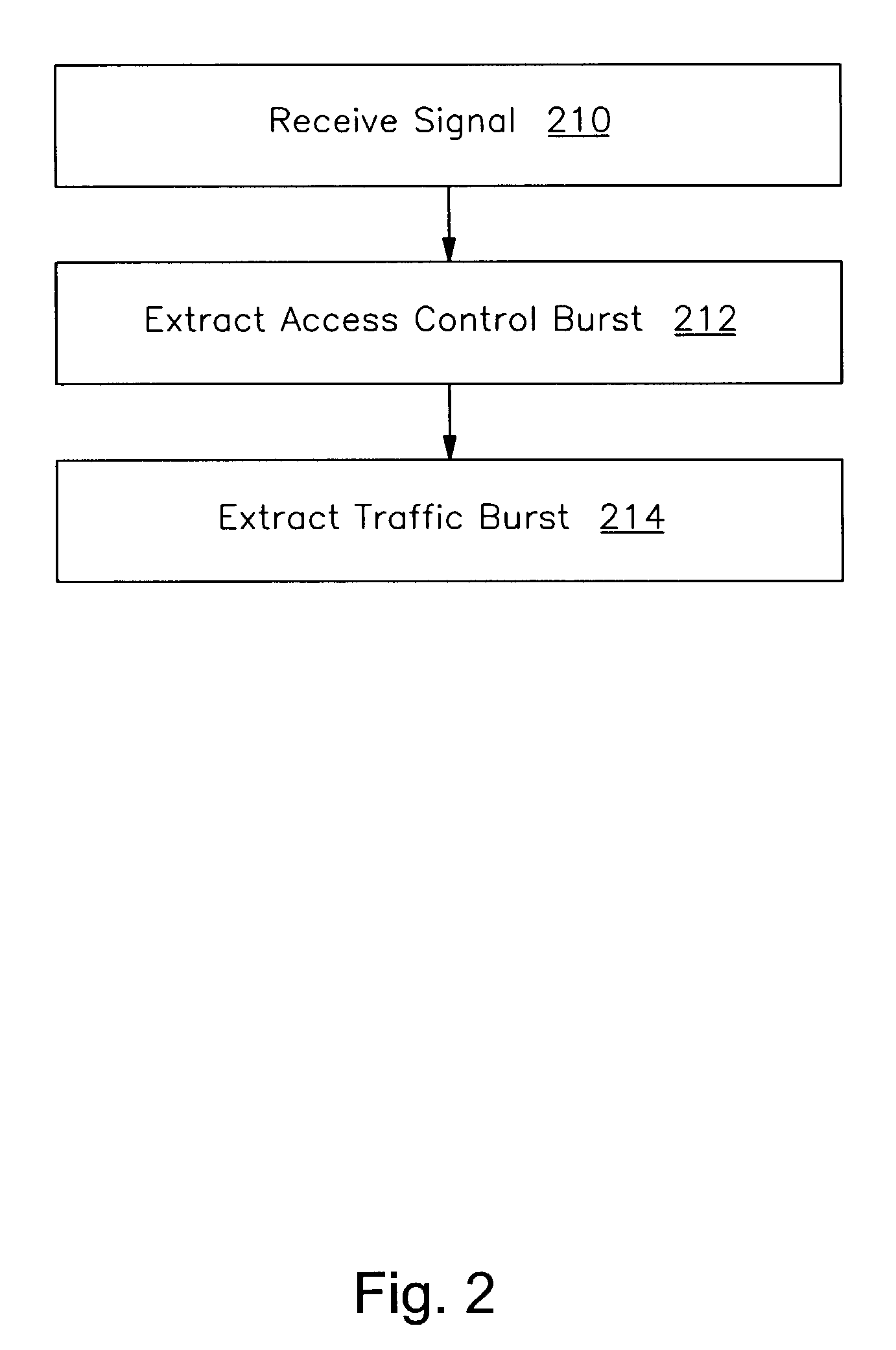Assigning training sequences based on spatial channels in a wireless communications system
a wireless communication system and spatial channel technology, applied in the field of radio communication systems, can solve problems such as reducing the efficiency of the communications system, and achieve the effect of efficient transmission of access control and traffic information
- Summary
- Abstract
- Description
- Claims
- Application Information
AI Technical Summary
Benefits of technology
Problems solved by technology
Method used
Image
Examples
Embodiment Construction
Overview
[0021]According to one embodiment of the invention, a random access channel (RACH) shares a conventional channel with one or more traffic channels (TCH). In one embodiment, the base station scans a received signal for a random access (RA) burst and uses spatial processing to extract the RA burst from the received signal that includes one or more traffic bursts. In one embodiment, a user terminal includes a training sequence in the RA burst that indicates that it is an RA burst when using the RACH. In one embodiment, the RACH and one or more TCHs are SDMA spatial channels occupying one conventional channel. The RA burst and the traffic bursts each have a training sequence in the same portion of the burst indicating which spatial channel they are using.
Using a Communications Channel for Access and Traffic
[0022]One embodiment of the present invention is described with reference to FIG. 1. FIG. 1 provides a conceptual demonstration of how embodiments of the invention may be prac...
PUM
 Login to View More
Login to View More Abstract
Description
Claims
Application Information
 Login to View More
Login to View More - R&D
- Intellectual Property
- Life Sciences
- Materials
- Tech Scout
- Unparalleled Data Quality
- Higher Quality Content
- 60% Fewer Hallucinations
Browse by: Latest US Patents, China's latest patents, Technical Efficacy Thesaurus, Application Domain, Technology Topic, Popular Technical Reports.
© 2025 PatSnap. All rights reserved.Legal|Privacy policy|Modern Slavery Act Transparency Statement|Sitemap|About US| Contact US: help@patsnap.com



